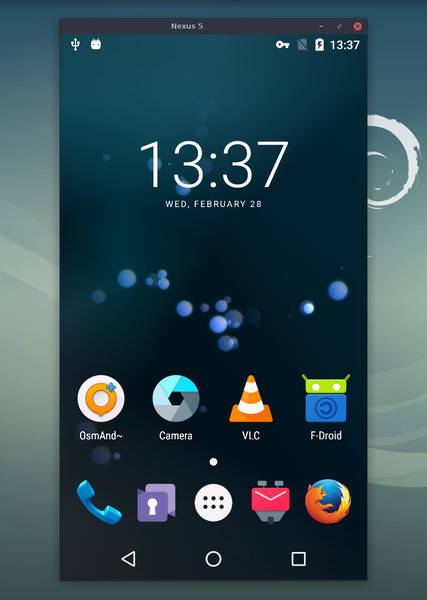Allow capturing virtual displays at a lower resolution using -m/--max-size. In the original implementation in #5370, the virtual display size was necessarily the same as the capture size. The --max-size value was only allowed to determine the virtual display size when no explicit size was provided. Since the dpi was scaled down accordingly, it is often better to create a virtual display at the target capture size directly. However, not everything is rendered according to the virtual display DPI. For example, a page in Firefox is rendered too big on small virtual displays. Thus, it makes sense to be able create a virtual display at a given size, and capture it at a lower resolution with --max-size. This is now possible using OpenGL filters. Therefore, change the behavior of --max-size for virtual displays: - it does not impact --new-display without size argument anymore (the virtual display size is the main display size); - it is used to limit the capture size (whether an explicit size is provided or not). This new behavior is consistent with main display capture. Refs #5370 comment <https://github.com/Genymobile/scrcpy/pull/5370#issuecomment-2438944401> Refs <https://github.com/Genymobile/scrcpy/pull/5370>
This GitHub repo (https://github.com/Genymobile/scrcpy) is the only official
source for the project. Do not download releases from random websites, even if
their name contains scrcpy.
scrcpy (v2.7)
pronounced "screen copy"
This application mirrors Android devices (video and audio) connected via USB or over TCP/IP, and allows to control the device with the keyboard and the mouse of the computer. It does not require any root access. It works on Linux, Windows and macOS.
It focuses on:
- lightness: native, displays only the device screen
- performance: 30~120fps, depending on the device
- quality: 1920×1080 or above
- low latency: 35~70ms
- low startup time: ~1 second to display the first image
- non-intrusiveness: nothing is left installed on the Android device
- user benefits: no account, no ads, no internet required
- freedom: free and open source software
Its features include:
- audio forwarding (Android 11+)
- recording
- virtual display
- mirroring with Android device screen off
- copy-paste in both directions
- configurable quality
- camera mirroring (Android 12+)
- mirroring as a webcam (V4L2) (Linux-only)
- physical keyboard and mouse simulation (HID)
- gamepad support
- OTG mode
- and more…
Prerequisites
The Android device requires at least API 21 (Android 5.0).
Audio forwarding is supported for API >= 30 (Android 11+).
Make sure you enabled USB debugging on your device(s).
On some devices (especially Xiaomi), you might get the following error:
java.lang.SecurityException: Injecting input events requires the caller (or the source of the instrumentation, if any) to have the INJECT_EVENTS permission.
In that case, you need to enable an additional option USB debugging (Security Settings) (this is an item different from USB debugging) to control
it using a keyboard and mouse. Rebooting the device is necessary once this
option is set.
Note that USB debugging is not required to run scrcpy in OTG mode.
Get the app
Usage examples
There are a lot of options, documented in separate pages. Here are just some common examples.
-
Capture the screen in H.265 (better quality), limit the size to 1920, limit the frame rate to 60fps, disable audio, and control the device by simulating a physical keyboard:
scrcpy --video-codec=h265 --max-size=1920 --max-fps=60 --no-audio --keyboard=uhid scrcpy --video-codec=h265 -m1920 --max-fps=60 --no-audio -K # short version -
Start VLC in a new virtual display (separate from the device display):
scrcpy --new-display=1920x1080 --start-app=org.videolan.vlc -
Record the device camera in H.265 at 1920x1080 (and microphone) to an MP4 file:
scrcpy --video-source=camera --video-codec=h265 --camera-size=1920x1080 --record=file.mp4 -
Capture the device front camera and expose it as a webcam on the computer (on Linux):
scrcpy --video-source=camera --camera-size=1920x1080 --camera-facing=front --v4l2-sink=/dev/video2 --no-playback -
Control the device without mirroring by simulating a physical keyboard and mouse (USB debugging not required):
scrcpy --otg -
Control the device using gamepad controllers plugged into the computer:
scrcpy --gamepad=uhid scrcpy -G # short version
User documentation
The application provides a lot of features and configuration options. They are documented in the following pages:
- Connection
- Video
- Audio
- Control
- Keyboard
- Mouse
- Gamepad
- Device
- Window
- Recording
- Virtual display
- Tunnels
- OTG
- Camera
- Video4Linux
- Shortcuts
Resources
- FAQ
- Translations (not necessarily up to date)
- Build instructions
- Developers
Articles
Contact
You can open an issue for bug reports, feature requests or general questions.
For bug reports, please read the FAQ first, you might find a solution to your problem immediately.
You can also use:
- Reddit:
r/scrcpy - Twitter:
@scrcpy_app
Donate
I'm @rom1v, the author and maintainer of scrcpy.
If you appreciate this application, you can support my open source work:
Licence
Copyright (C) 2018 Genymobile
Copyright (C) 2018-2024 Romain Vimont
Licensed under the Apache License, Version 2.0 (the "License");
you may not use this file except in compliance with the License.
You may obtain a copy of the License at
http://www.apache.org/licenses/LICENSE-2.0
Unless required by applicable law or agreed to in writing, software
distributed under the License is distributed on an "AS IS" BASIS,
WITHOUT WARRANTIES OR CONDITIONS OF ANY KIND, either express or implied.
See the License for the specific language governing permissions and
limitations under the License.
